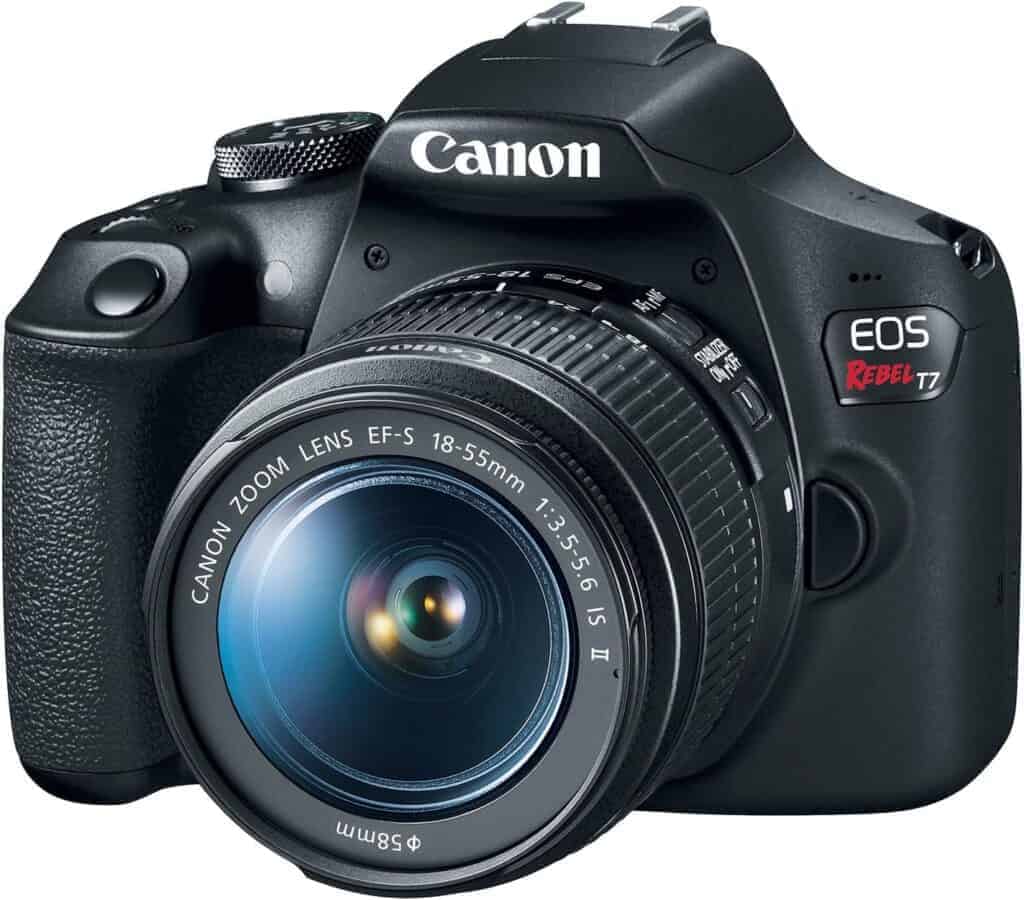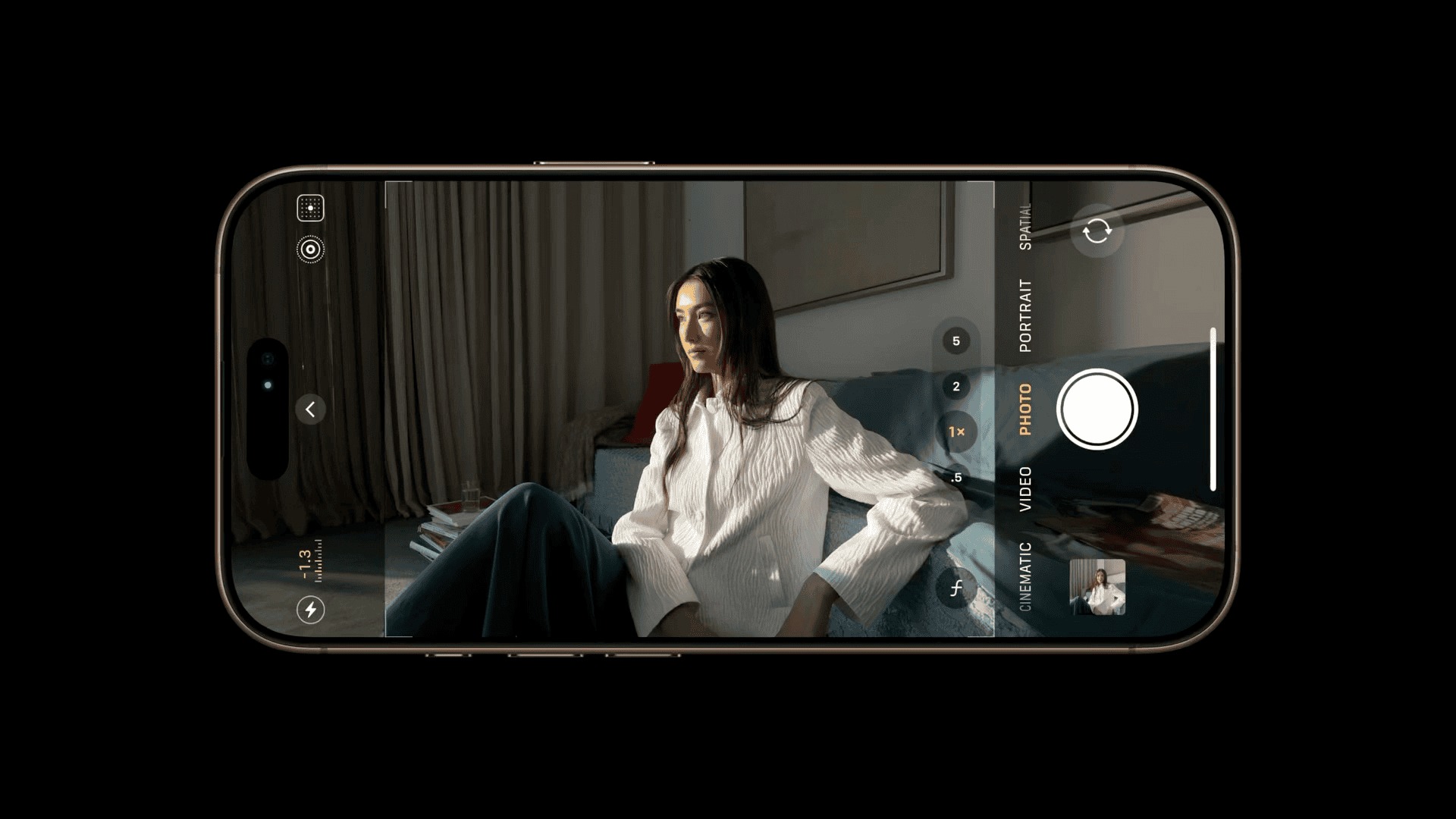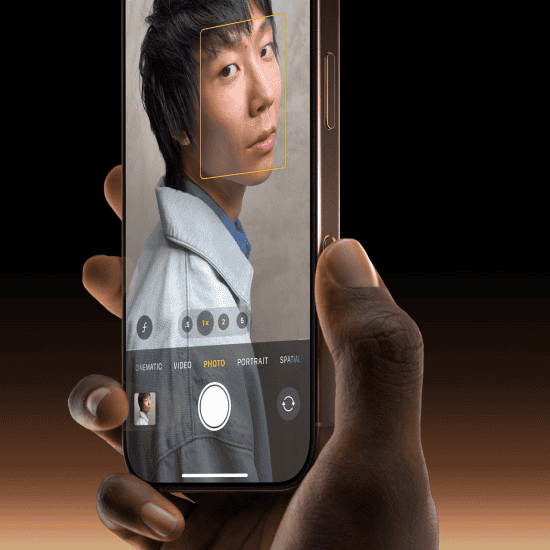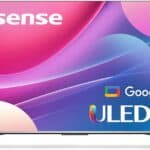The iPhone has transformed many aspects of our daily lives, and its camera technology is no exception. With each new model, the iPhone camera has advanced, pushing the limits of traditional photography. In particular, the iPhone 16 Pro has sparked a debate about how it compares to professional cameras like DSLRs and mirrorless models. The camera on the iPhone 16 Pro represents a significant leap in smartphone photography, offering impressive capabilities and convenience in a compact device.
However, when it comes to professional photography, DSLRs and mirrorless cameras still have the advantage in terms of versatility, image quality, and control.Ultimately, the choice between an iPhone and a professional camera depends on the user’s specific needs, preferences, and the context in which the camera will be used. This article explores this comparison, examining various aspects, from sensor size to real-world performance.

Comparing the iPhone 16 Pro Max and Canon EOS Rebel T7
It might seem odd to compare a smartphone with a DSLR camera. But the iPhone 16 Pro Max has made huge leaps in camera technology. Let’s see how it stacks up against a popular entry-level DSLR like the Canon EOS Rebel T7.
summarizing the key differences:
| Feature | iPhone 16 Pro Max | Canon EOS Rebel T7 |
|---|---|---|
| Sensor | 48MP | 24.1MP APS-C |
| Lens | Triple-lens system | Interchangeable lenses |
| Video | 4K with ProRes and Cinematic mode | 4K |
| Ease of Use | Very easy to use | Steeper learning curve |
| Portability | Highly portable | Less portable |
| Price | More expensive | More affordable |
Image Quality
The iPhone 16 Pro Max boasts a 48MP main sensor and advanced image processing. This allows it to capture stunning images with impressive detail, especially in good lighting. The Canon EOS Rebel T7, with its 24.1MP APS-C sensor, offers a larger sensor size. This gives it an advantage in low light and dynamic range. The T7 produces less noise and better image quality when light is limited.
Lens Versatility
The iPhone 16 Pro Max features a triple-lens system. You get a main lens, a telephoto lens, and an ultrawide lens. This provides flexibility for various shooting scenarios. The Canon EOS Rebel T7, being an interchangeable lens camera, offers far superior versatility. You can choose from a vast selection of lenses. This lets you specialize in different types of photography, from wide-angle landscapes to telephoto wildlife shots.
Video Capabilities
Both devices can record 4K video. But the iPhone 16 Pro Max offers more advanced video features. This includes ProRes recording and Cinematic mode for that shallow depth of field look. The Canon EOS Rebel T7, while capable of recording decent video, lacks the advanced video features of the iPhone.
Ease of Use
The iPhone 16 Pro Max is incredibly easy to use. Its intuitive interface and computational photography capabilities make it simple to capture great photos. The Canon EOS Rebel T7, with its manual controls and more complex settings, has a steeper learning curve. It offers greater control over your images but requires more photography knowledge.
Portability

The iPhone 16 Pro Max is a pocket-sized device that’s always with you. This makes it ideal for everyday photography and capturing spontaneous moments. The Canon EOS Rebel T7 is a larger and bulkier device. It requires a dedicated camera bag and is less convenient to carry around.
Price
The iPhone 16 Pro Max is a premium smartphone with a high price tag. The Canon EOS Rebel T7 is a more affordable option, especially when you consider the cost of additional lenses for the camera.
Advanced Specifications Comparison
| Technical Specs | iPhone 16 Pro Max | Canon EOS Rebel T7 |
|---|---|---|
| Sensor Type | 1/1.3″ Quad-Pixel CMOS | APS-C CMOS |
| Sensor Size | 8.81 mm x 7.21 mm | 22.3 x 14.9 mm |
| Resolution | 48MP | 24.1MP |
| Lens Mount | Fixed | Canon EF-S |
| Focal Length (35mm equivalent) | Main: 24mm, Telephoto: 77mm, Ultrawide: 13mm | 18-55mm (kit lens) |
| Aperture | Main: f/1.78, Telephoto: f/2.8, Ultrawide: f/2.2 | f/3.5-5.6 (kit lens) |
| Optical Zoom | 3x optical zoom | 3x optical zoom (kit lens) |
| Image Stabilization | Sensor-shift and optical image stabilization | Lens-based image stabilization (depending on lens) |
| ISO Range | 24 – 25600 | 100-6400 (expandable to 12800) |
| Shutter Speed | 1/120,000 to 30 seconds | 30 – 1/4000 sec, Bulb |
| Video Recording | 4K at 24/25/30/60fps, 1080p at 25/30/60/120/240fps, ProRes, Cinematic mode | 1080p at 30fps |
| Viewfinder | Electronic viewfinder (EVF) via display | Optical viewfinder |
| Display | 6.9-inch Super Retina XDR display | 3-inch LCD |
| Weight | 243 grams | 475 grams (body only) |
| Dimensions | 160.8 x 77.6 x 7.85 mm | 129 x 101.3 x 77.6 mm (body only) |
It’s challenging to compare an iPhone to “just a camera” because the iPhone offers much more than just photography capabilities. To illustrate this, we’ll look at the best-selling DSLR camera on Amazon, the Canon EOS Rebel T7, which is currently priced around $479. Meanwhile, the iPhone 16 Pro Max is listed at approximately $1,199. The price difference can largely be attributed to the additional features and functionalities that the Pro Max provides.

Additional factors to consider:
- Your budget: DSLRs can be a significant investment, including lenses and accessories.
- Your skill level: iPhones are great for beginners, while DSLRs require more technical knowledge.
- Your shooting style: Consider what subjects you’ll be photographing and whether you need specific lenses.
- Editing and post-processing: Both cameras can produce stunning images, but DSLRs often require more editing for optimal results.
Other Considerations
| Feature | iPhone 16 Pro Max Camera | Canon EOS Rebel T7 DSLR | Notes |
|---|---|---|---|
| Portability | Fits in your pocket | Bulky and heavier, requires bag carrying | iPhones are ideal for everyday use and travel, while DSLRs are better suited for dedicated photography outings. |
| Ease of Use | Point-and-shoot functionality, automatic settings | Steeper learning curve, manual adjustments for optimal results | iPhones are great for beginners and casual users, while DSLRs offer more control for experienced photographers. |
| Image Quality | Excellent quality in good lighting, advanced computational photography features | Superior image quality with larger sensor, especially in low light and with interchangeable lenses | DSLRs excel in image quality, particularly in challenging lighting conditions. |
| Versatility | Limited options, fixed triple-lens system | Interchangeable lenses offer vast options for telephoto, wide-angle, etc. | DSLRs provide much more flexibility for various photography styles and subjects. |
| Video Recording | Good quality, 4K resolution with various cinematic features | High-quality video recording, often with higher frame rates and professional options | DSLRs offer more control and flexibility for professional video productions. |
| Low-Light Performance | Good with computational enhancement, dedicated Night Mode | Significantly better with larger sensor and wider apertures | DSLRs shine in low-light scenarios due to sensor size and lens options. |
| Battery Life | Moderate, needs daily charging | Varies depending on usage, often longer than iPhones | Consider battery life for extended shooting sessions. |

Ultimately, the best choice depends on your needs and priorities. If you value portability, ease of use, and everyday convenience, the iPhone 16 Pro Max camera might be perfect. If you prioritize image quality, versatility, and manual control for serious photography, the Canon EOS Rebel T7 DSLR could be a better investment.
Additional factors to consider:
- Your budget: DSLRs can be a significant investment, including lenses and accessories.
- Your skill level: iPhones are great for beginners, while DSLRs require more technical knowledge.
- Your shooting style: Consider what subjects you’ll be photographing and whether you need specific lenses.
- Editing and post-processing: Both cameras can produce stunning images, but DSLRs often require more editing for optimal results.
Key Takeaways
- Sensor Size and Quality: iPhone’s smaller sensor vs. larger sensors in professional cameras.
- Lens Capabilities: Fixed iPhone lens vs. interchangeable lenses in DSLRs.
- Image Processing: iPhone’s computational photography vs. manual controls in real cameras.
- Practical Use: Portability and convenience of the iPhone against the versatility of real cameras.
- Real-World Performance: How both types of cameras perform in everyday scenarios.
Sensor Size and Quality: A Critical Comparison
iPhone’s Compact Sensor
The iPhone 16 Pro, like its predecessors, is equipped with a relatively small sensor. This compact size, while beneficial for the phone’s sleek design, has implications for image quality, especially in low-light conditions.
DSLRs and Mirrorless Cameras: Larger Sensors
In contrast, DSLRs and mirrorless cameras boast significantly larger sensors. This size advantage allows for better light capture, resulting in superior image quality, particularly in challenging lighting situations.
Table: Sensor Size Comparison
| Camera Type | Sensor Size |
|---|---|
| iPhone 16 Pro | Small |
| DSLR/Mirrorless | Large |

Lens Capabilities: Flexibility vs. Convenience
iPhone’s Fixed Lens
The iPhone 16 Pro’s lens, while advanced, is fixed. This means users are limited to the built-in lens capabilities, which, although versatile, cannot match the adaptability of interchangeable lenses.
DSLRs and Mirrorless: Interchangeable Lenses
Professional cameras offer the flexibility of interchangeable lenses, catering to a wide range of photographic needs, from wide-angle to telephoto.
Table: Lens Capabilities
| Camera Type | Lens Type |
|---|---|
| iPhone 16 Pro | Fixed |
| DSLR/Mirrorless | Interchangeable |
Image Processing: Computational vs. Manual
iPhone’s Computational Photography
The iPhone 16 Pro utilizes computational photography, harnessing software to enhance images. This approach compensates for hardware limitations but can sometimes result in over-processed images.
DSLRs and Mirrorless: Manual Controls
Professional cameras offer manual controls, giving photographers the freedom to adjust settings like exposure and white balance, leading to more natural and nuanced images.
Table: Image Processing Techniques
| Camera Type | Processing Type |
|---|---|
| iPhone 16 Pro | Computational |
| DSLR/Mirrorless | Manual |
Practical Use: Portability and Convenience

iPhone: Always in Your Pocket
The iPhone 16 Pro’s greatest advantage is its portability. It’s always with you, ready to capture moments at a moment’s notice.
DSLRs and Mirrorless: Versatility at a Cost
Professional cameras, while versatile, are bulkier and require more preparation and accessories, making them less convenient for spontaneous photography.
Table: Practical Use Comparison
| Camera Type | Portability | Versatility |
|---|---|---|
| iPhone 16 Pro | High | Moderate |
| DSLR/Mirrorless | Moderate | High |
Real-World Performance: Everyday Use

iPhone in Daily Life
In everyday scenarios, the iPhone 16 Pro excels with its ease of use and quick sharing capabilities. Its performance in well-lit conditions is often comparable to that of professional cameras.
DSLRs and Mirrorless in Professional Settings
In professional settings or challenging lighting, DSLRs and mirrorless cameras outperform the iPhone, offering higher image quality and greater control.
Table: Real-World Performance
| Camera Type | Everyday Use | Professional Use |
|---|---|---|
| iPhone 16 Pro | Excellent | Good |
| DSLR/Mirrorless | Good | Excellent |
The Future of Photography
As technology progresses, the gap between smartphone cameras and professional cameras is narrowing. However, there are inherent limitations in smartphones due to their size and primary function as communication devices. While the iPhone continues to impress with each new release, it’s unlikely to completely replace professional cameras, especially in settings where image quality and control are paramount.
Zoom and Focal Length Differences
iPhone’s Optical Zoom
The iPhone 16 Pro offers a decent range of optical zoom, but it’s limited compared to professional cameras. The quality tends to degrade with digital zoom, affecting the clarity and detail of the images.
DSLRs and Mirrorless: Superior Zoom Capabilities
Professional cameras, with their range of lenses, offer superior optical zoom capabilities. This allows photographers to capture distant subjects without losing image quality.
Table: Zoom Capabilities Comparison
| Camera Type | Optical Zoom Range |
|---|---|
| iPhone 16 Pro | Limited |
| DSLR/Mirrorless | Extensive |
Video Capabilities: A Crucial Aspect
iPhone’s 4K Video
The iPhone 16 Pro can shoot 4K video at 60fps, offering impressive video quality for a smartphone. However, it may struggle with dynamic range and audio quality compared to professional cameras.
Professional Cameras: Advanced Video Features
DSLRs and mirrorless cameras provide more control over video settings, higher dynamic range, and better sound recording options, making them preferable for professional videography.
Table: Video Capabilities
| Camera Type | Video Quality | Control |
|---|---|---|
| iPhone 16 Pro | Good | Limited |
| DSLR/Mirrorless | Excellent | Extensive |
Battery Life and Durability in Field Use
iPhone’s Battery Life
While the iPhone 16 Pro has a decent battery life, intensive camera use, especially video recording, can drain it quickly.
DSLRs and Mirrorless: Longer Battery Life
Professional cameras typically have longer battery life, making them more reliable for extended shoots and travel.
Table: Battery Life Comparison
| Camera Type | Battery Life |
|---|---|
| iPhone 16 Pro | Moderate |
| DSLR/Mirrorless | Long |
User Experiences and Market Trends
Consumer Preferences
Many users appreciate the convenience and immediacy of the iPhone camera for everyday use. However, professional photographers and enthusiasts often prefer DSLRs or mirrorless cameras for their flexibility and image quality.
Market Trends
The market is seeing a growing trend towards smartphone photography, with many users relying solely on their phones for photography needs. However, there is still a strong market for professional cameras among enthusiasts and professionals.
FAQs
How does the iPhone 16 Pro camera’s sensor size compare to DSLRs?
The iPhone 16 Pro has a significantly smaller sensor than DSLRs. Think of a sensor as the “eye” of your camera. A bigger eye can generally see more, especially in low light. DSLRs have larger sensors that capture more light and detail, resulting in better image quality, particularly in challenging lighting conditions.
Can the iPhone 16 Pro’s lens match the versatility of DSLR lenses?
While the iPhone 16 Pro boasts multiple lenses, it can’t match the versatility of interchangeable DSLR lenses. DSLRs allow you to use specialized lenses for different types of photography, like macro lenses for close-ups or telephoto lenses for wildlife. This level of customization isn’t possible with the iPhone’s fixed lens system.
Is the iPhone 16 Pro suitable for professional photography?
The iPhone 16 Pro can capture amazing images and is a valuable tool for many photographers. However, DSLRs still reign supreme in professional settings due to their superior image quality, lens versatility, and control over settings.
How does the iPhone perform in low-light photography compared to DSLRs?
Due to its smaller sensor, the iPhone 16 Pro struggles in low-light situations compared to DSLRs. DSLRs excel in low light, producing less grainy images and capturing more detail.
Can the iPhone 16 Pro replace a professional video camera?
The iPhone 16 Pro’s video capabilities are impressive, but it can’t fully replace a professional video camera. Professional video cameras offer more advanced features, higher bitrates, and greater control over settings, making them better suited for filmmaking and videography.
What are the advantages of using an iPhone camera over a DSLR?
iPhones are incredibly convenient. They’re always with you, making it easy to capture spontaneous moments. Their simple interface and computational photography make taking great photos effortless. Plus, they offer seamless sharing capabilities.
Are professional cameras still relevant in the age of smartphones?
Absolutely! Professional cameras offer unmatched image quality, lens versatility, and control over settings. They remain essential tools for photographers and videographers who demand the best possible results.
Is the iPhone camera better than a “real” camera?
It depends on your needs and priorities. The iPhone camera excels in convenience and ease of use, while a “real” camera (like a DSLR or mirrorless camera) offers superior image quality and creative control.
Is it better to buy an iPhone or a camera?
If you value convenience, ease of use, and always having a camera with you, an iPhone is a great choice. If you prioritize image quality, creative control, and specialized photography, a dedicated camera is the way to go.
Why do iPhone pictures sometimes look better than camera pictures?
iPhones excel at computational photography. They use software to automatically enhance images, making them look more vibrant and pleasing. However, this sometimes comes at the expense of image accuracy and detail, which dedicated cameras prioritize.







